Enjoy Family Nature Studies
. . .Now Available and Coming Soon Projects. . .
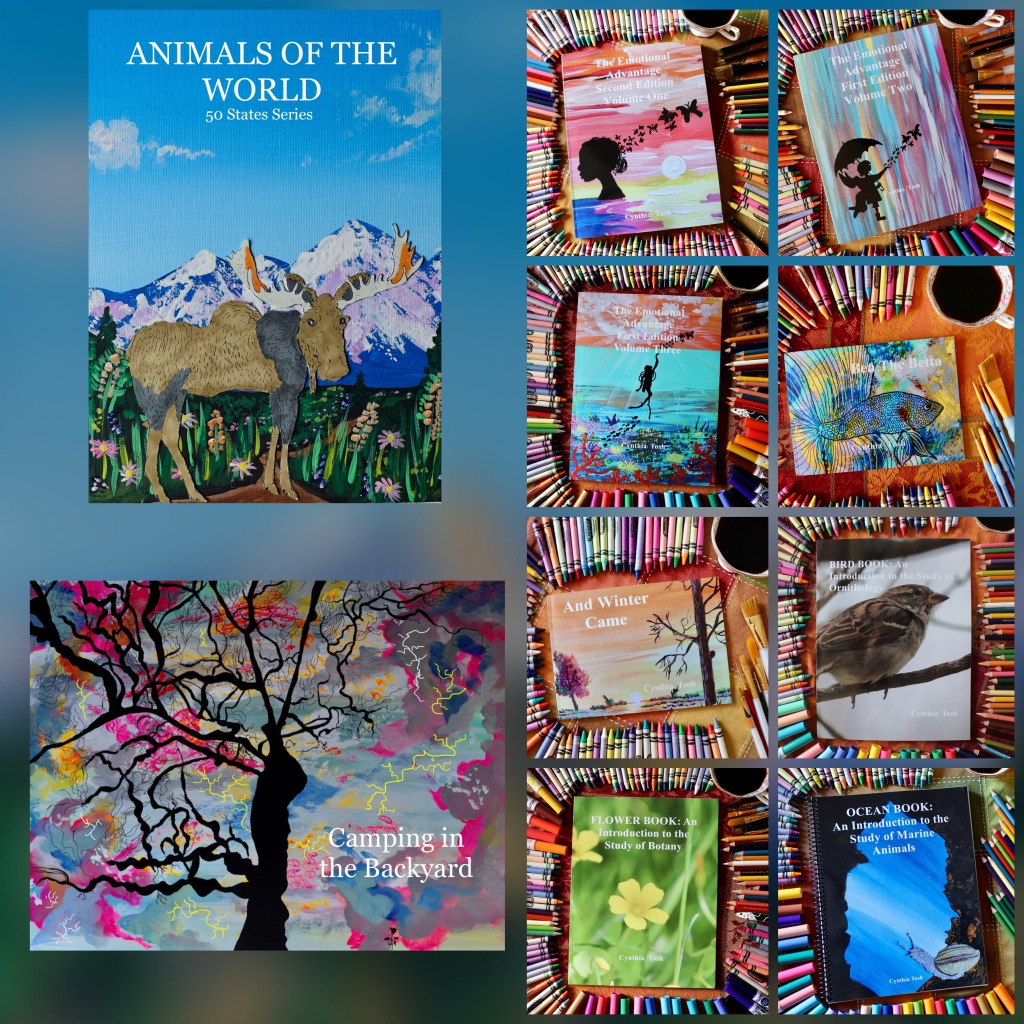
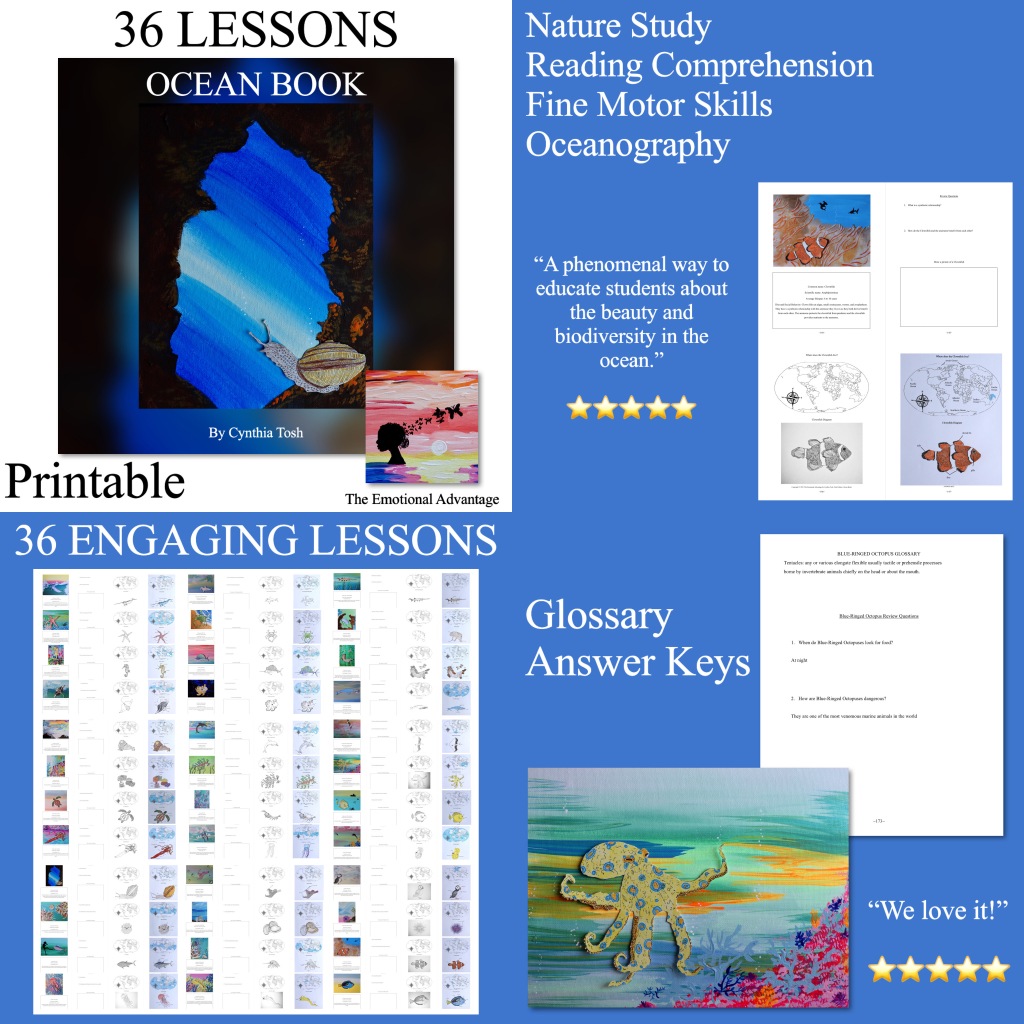
DOWNLOAD printable OCEAN BOOK for ONLY $29.94
Length: 188 pages
Recommended ages: 3-9
~NOW ON TEACHERS PAY TEACHERS~
OCEAN BOOK: An Introduction to the Study of Marine Animals
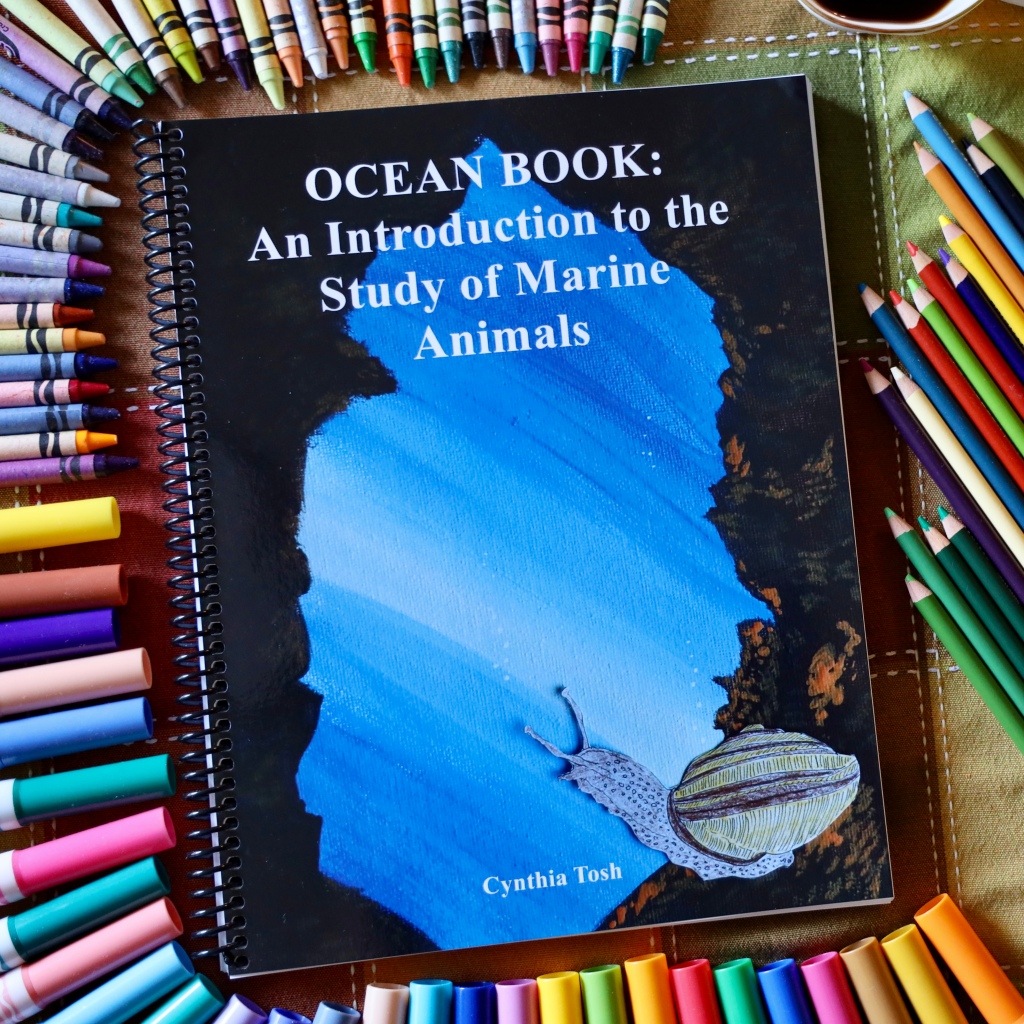
PURPOSE OF OCEAN BOOK
Ocean Book: An Introduction to the study of Marine Animals is a nine-month course of learning based on studying Marine Biodiversity while practicing, Reading Comprehension, Creativity, Oceanography, and Fine Motor Skills. The goals and objectives for using this curriculum include but are not limited to:-Understand similarities and differences between 36 species of marine animals. -Learn how to focus on detail within the sketching and labeling parts of a marine animal. -Identify where all five oceans are found on a world map. -Improve fine motor skills. -Restore and enrich attention span.
HOW TO USE OCEAN BOOK
Everyone has their own standards of success, and this book can serve as a means of exposure, introduction, or advanced learning. Below are the descriptions for these learning levels. Exposure: Recommended Ages 3-5: Listen to instructor read descriptions, questions, and answers, look at pictures, draw picture, color diagrams.Introduction: Recommended Ages 6-8: Listen to instructor guided directions, complete sections as directed. Advanced: Recommended Ages 9-up: Complete curriculum independently. Thirty-six weeks are designed to review one marine animal species through a reading comprehension exercise and marine animal diagram. Each week includes an answer key for the diagrams. A marine animal glossary section and reading comprehension answer key located in the back of the book. Suggested Supplies: Pencils and Colored Pencils.
-Connecting with Nature is a way to Increase Self-Awareness and Life Satisfaction-
Includes:*Scope and Trajectory*Glossary*36 World Maps*36 Draw it Sections*36 Marine Animal Diagram Coloring and Labeling Pages*36 Marine Animal Diagrams and Terms Answer Keys*36 Common and Scientific Species Names*36 Descriptions of Diet and Social Behaviors*36 Average Lifespans*36 Reading Comprehension Exercises*36 Reading Comprehension Answer Keys*36 Illustrations of Marine Animals
Thank you for your support and interest.
Terms of Use
This resource was created by The Emotional Advantage by Cynthia Tosh, all rights reserved. It may be used by the original purchaser for personal (family) use only. Larger group discounts are available. Contact Cynthia Tosh at: theemotionaladvantage@gmail.com
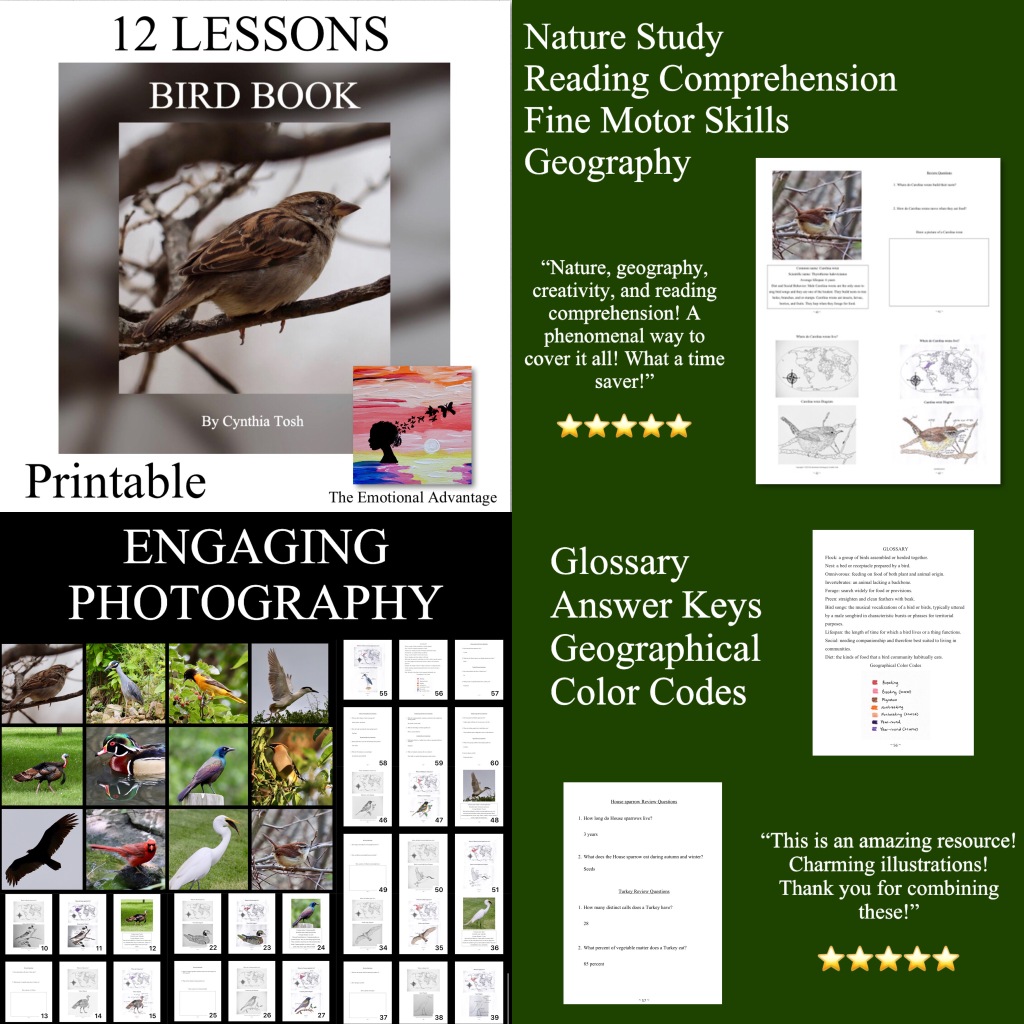 DOWNLOAD printable BIRD BOOK for ONLY $14.98
DOWNLOAD printable BIRD BOOK for ONLY $14.98
Length: 63 pages
Recommended ages: 3-9
~NOW ON TEACHERS PAY TEACHERS~
https://www.teacherspayteachers.com/Sellers-Im-Following/Add/The-Emotional-Advantage
BIRD BOOK: An Introduction to the Study of Ornithology

(Photo of BOOKPATCH Softcover)
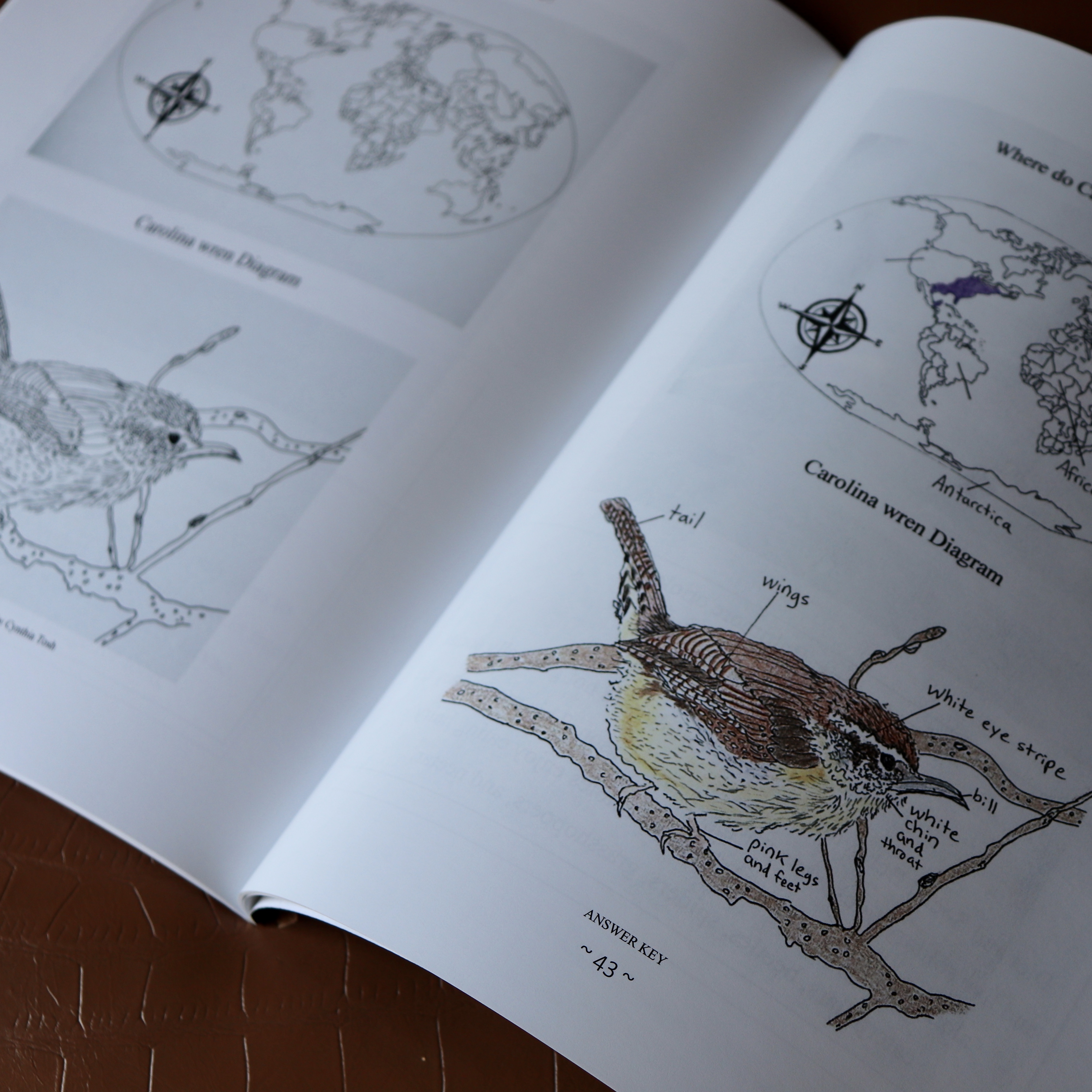
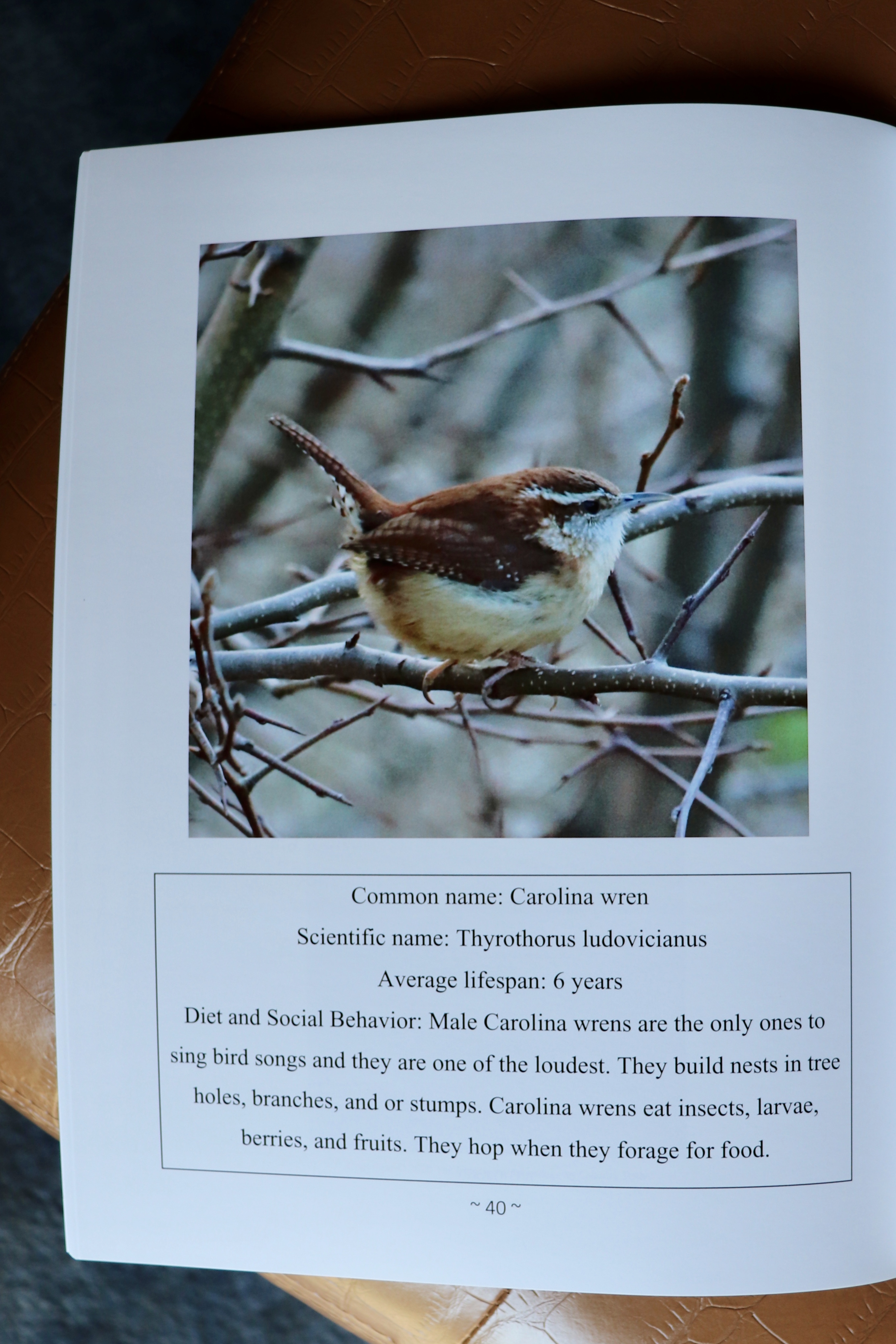 PURPOSE OF BIRD BOOK
PURPOSE OF BIRD BOOK
Bird Book: An Introduction to Ornithology is a three-month course of adaptive and progressive learning based on studying Nature and Geography while practicing Reading Comprehension, Creativity, and Fine Motor Skills.
The goals and objectives for using this curriculum include but are not limited to:
-Understand the similarities and differences between 12 species and subspecies of birds.
-Learn how to focus on detail within the sketching and labeling parts of a bird.
-Identify where all seven continents are found on a world map.
-Improve fine motor skills.
HOW TO USE BIRD BOOK
This book uses an adaptive and progressive process to help the learner enjoy the content. Everyone has their own standards of success and this book can serve as a means of exposure, introduction, or advanced learning. Below are the descriptions of these learning levels.
Exposure: Recommended Ages 3-5: Listen to the instructor read descriptions, questions, answers, look at pictures, draw pictures, and color diagrams.
Introduction: Recommended Ages 6-8: Listen to the instructor’s guided directions and complete sections as directed.
Advanced: Recommended Ages 9-up: Complete curriculum independently.
ITINERARY SCHEDULE
Weekly
| M1 | M2 | M3 |
| 1Bird Section | 1Bird Section | 1Bird Section |
| 1Bird Section | 1Bird Section | 1Bird Section |
| 1Bird Section | 1Bird Section | 1Bird Section |
| 1Bird Section | 1Bird Section | 1Bird Section |
The first eight weeks are designed to deliver an adaptive and progressive way of learning about different birds and the seven continents. The last four weeks are designed to continue this process and measure aptitude in independently identifying the seven continents. Each week includes an answer key for the diagrams to guide the process. The reading comprehension answer key is located inside the back of the book. Suggested Supplies: Pencils and Colored Pencils
-Connecting with Nature is a way to Increase Self-Awareness and Life Satisfaction-
Includes:
*Scope and Trajectory
*Geographical Color Codes
*Glossary
*12 World Maps
*12 Draw it Sections
*12 Bird Diagram Coloring and Labeling Pages
*12 Bird Diagrams and Terms Answer Keys
*12 Common and Scientific Species Names
*12 Descriptions of Diet and Social Behaviors
*12 Average Lifespans
*12 Reading Comprehension Exercises
*12 Reading Comprehension Answer Keys
*12 Photographs of Real Birds
Thank you for your support and interest.
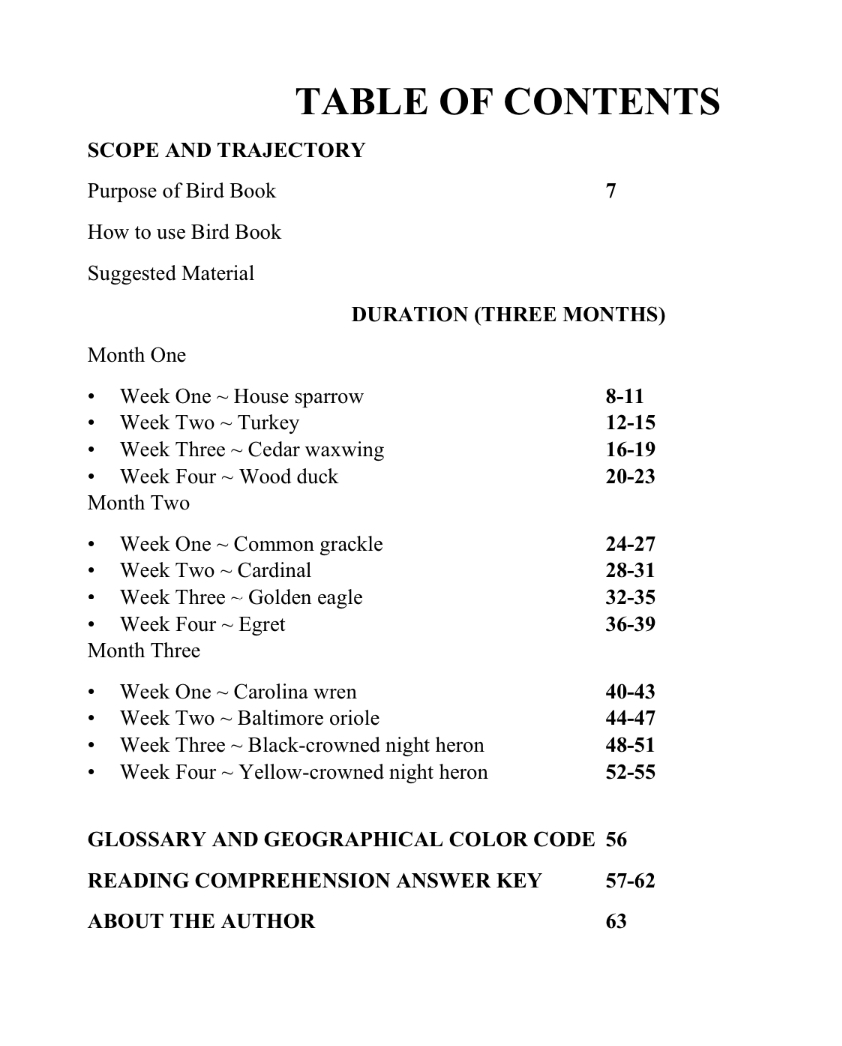
Copyright © 2020 The Emotional Advantage by Cynthia Tosh. All rights reserved.
The Emotional Advantage (Second Edition) Volume One (All Ages)
Copyright © 2019 The Emotional Advantage by Cynthia Tosh. All rights reserved.
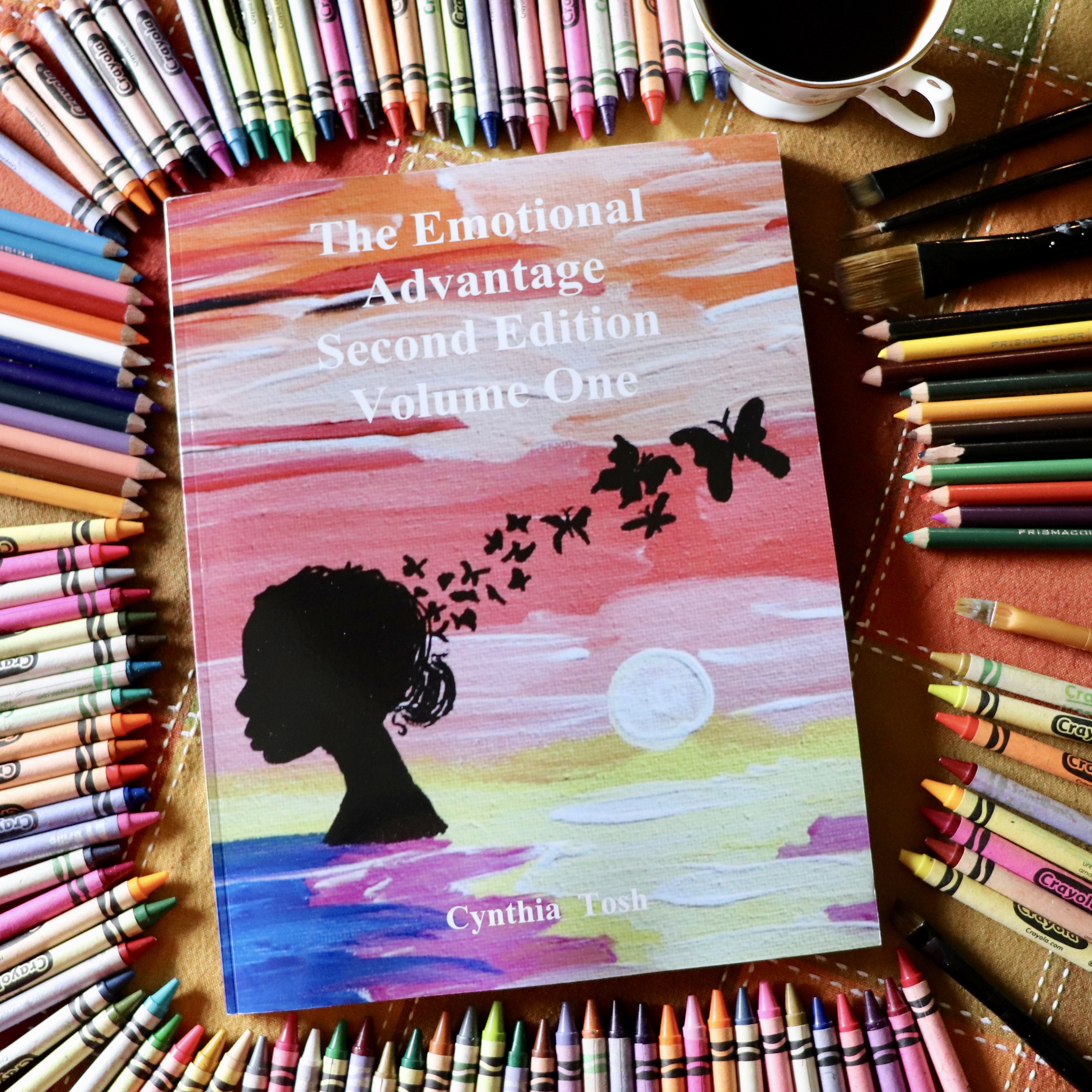
(Photo of BOOKPATCH Softcover)
“An investment in knowledge always pays the best interest.”
-Benjamin Franklin-
-Based on 36 Months of Field Research-
Parents and Educators: Are you looking for a resource to encourage creativity, confidence, problem solving, perseverance, and focus?
Get ready to hear:
“I remember. . .”
“I think. . .”
“I choose. . .”
Watch kids learn how to connect their thoughts to their actions. Emotional Intelligence helps children understand their world and self-generate solutions to reaching goals! The Emotional Advantage (Second Edition) Volume One (All Ages) is now available to help in this process!
-Based on 36 Months of Field Research-
ABSTRACT
A multi-faceted thought processing motivational economic approach on interpreting emotions and learning, integrated into a multi-platform educational process aimed towards producing individualistic progress and topic retention. Creative thought processing exercises help yield abstract thought and objectivity towards the world. Introducing and defining different information processing learning methods through story analysis, cultural, artistic, and musical expression help in accomplishing this goal. This is applicable in multiple settings and relevant on several levels of human interaction and development. Complete with original illustrations depicting each theme and photography complimenting reflections on how nature improves mental health.
OUT OF PRINT
The Emotional Advantage (First Edition) Volume Two (All Ages)
Copyright © 2019 The Emotional Advantage by Cynthia Tosh. All rights reserved.
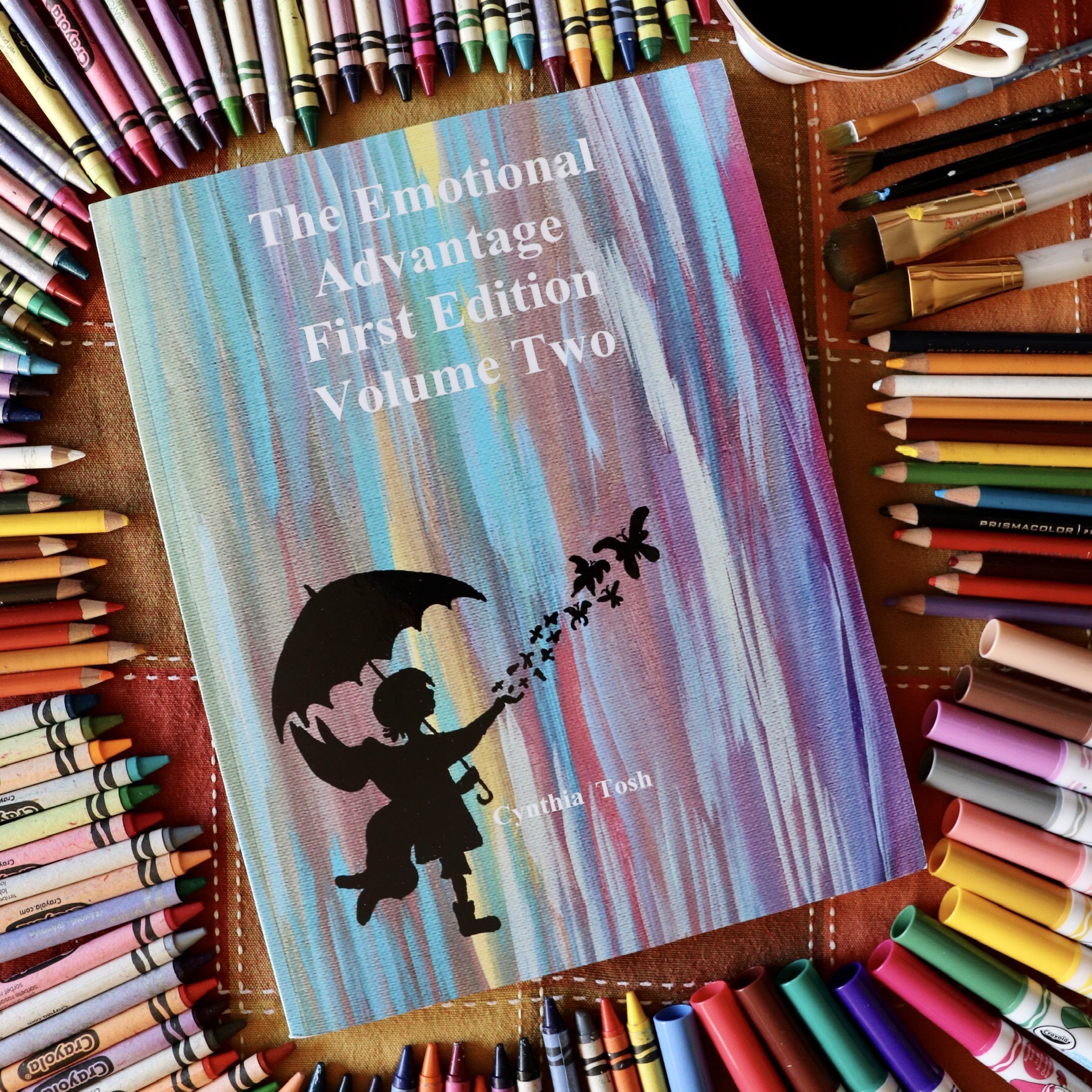
(Photo of BOOKPATCH Softcover)
“Tell me and I forget, teach me and I may remember, involve me and I learn.”
-Benjamin Franklin-
Innovative. Educational. Inspiring. A curriculum built on a platform of twenty four months of quantitative and qualitative field research.
Here’s a preview of the book cover art for The Emotional Advantage (First Edition) Volume Two (All Ages). The colors represent feelings and the umbrella symbolizes emotional intelligence. The wings and butterflies express abstract thought and creative thinking. Thank you friends for your ongoing feedback, support, and interest. Grateful beyond words.
OUT OF PRINT
My Book Adventures
Copyright © 2019 The Emotional Advantage by Cynthia Tosh. All rights reserved.
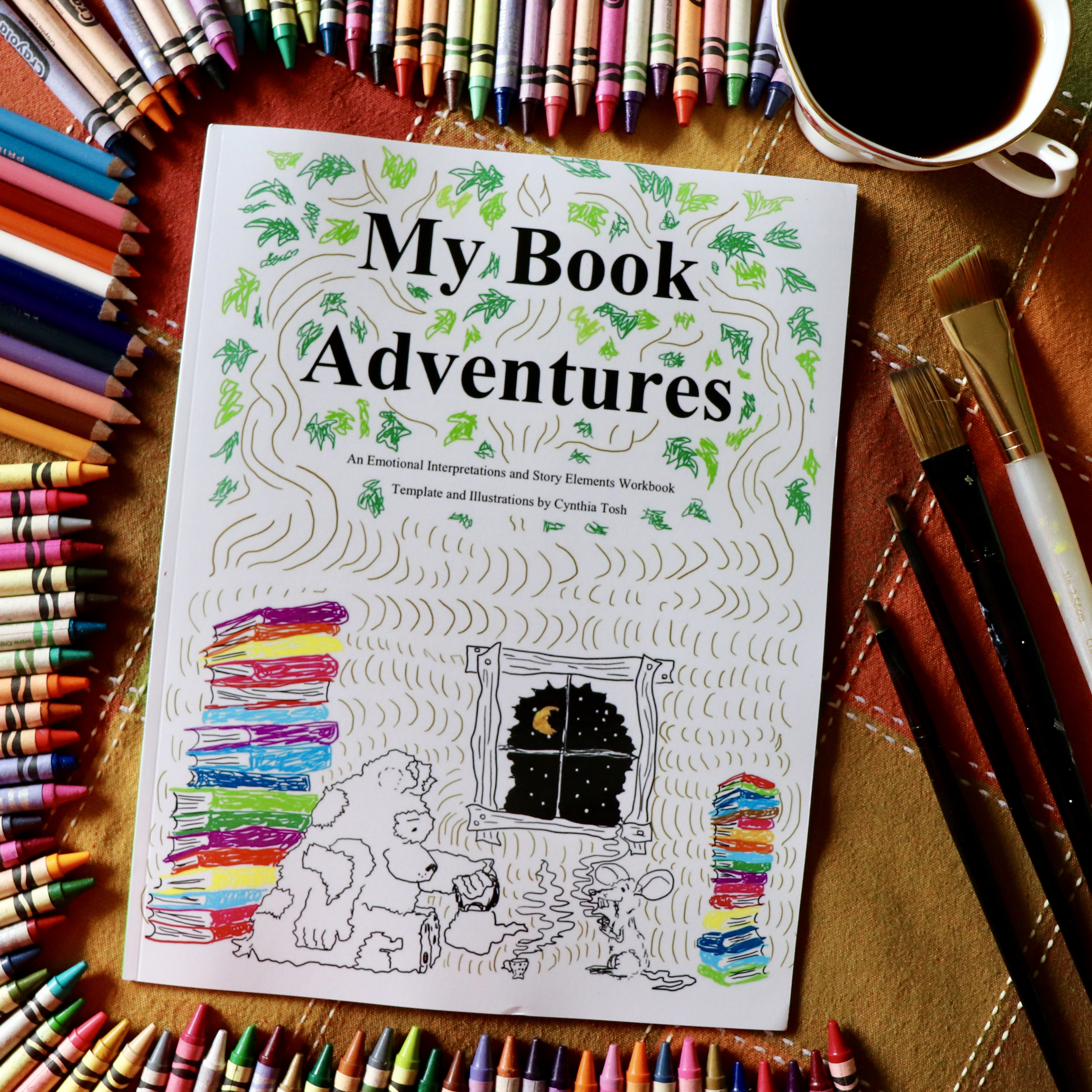
(Photo of BOOKPATCH Softcover)
A BOOK IS A JOURNEY
My Book Adventures is a Workbook to track and commemorate the books you read. It can become used as a companion for The Emotional Advantage Curriculums or a stand-alone Workbook. Understanding how characters feel emotionally within different contexts is a wonderful exercise for building critical thinking skills and emotional intelligence. In addition, this Workbook is a memory maker for dating when books become read and how one feels about the story. There is a section to note the five elements of each story. Books are special journeys worth documenting and remembering. Finally, there is a thinking exercise to help one self-generate new ideas and creativity based on the book they are reading. Fill out the sections as you go through your reading adventure or wait until you’re completely finished with the journey. Thank you for celebrating books with me. Enjoy.
Ben The Betta
Copyright © 2018 The Emotional Advantage by Cynthia Tosh. All rights reserved.
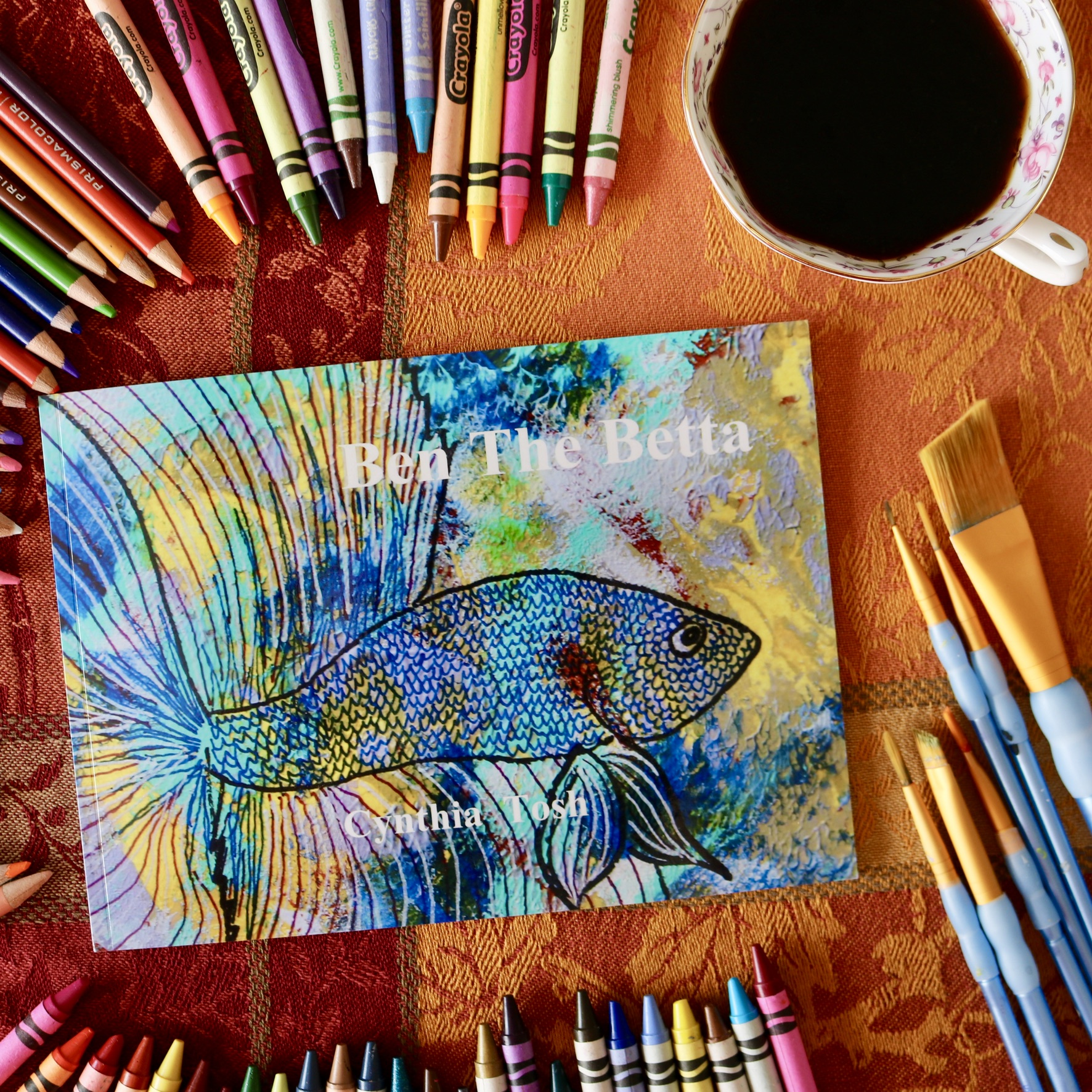
(Photo of BOOKPATCH Softcover)
Snapshot of Ben The Betta
It was a peaceful summer day… with so many reasons for happiness. But, all the other Betta’s just kept wanting to brawl in their rice patties! Even though Ben’s a Betta too, and being territorial is common among his species, he had no interest in this. He knew he was different.
Ben the Betta is about listening to your heart and finding friends in unexpected places. Never judge a book by its cover. There are different forms of animal communication and species behavior. Biodiversity is important to help promote on land AND water.
Entertaining. Educational. Engaging. Ben the Betta is a fun, heartwarming story and platform to learn about fundamental relationship dynamics and promote earth science conservation efforts. Let’s go!!
ABOUT THE BOOK
Ben the Betta is one book from a series published by The Emotional Advantage. Each book offers concepts to understand a bigger picture, emotions to realize how interactions and outcomes unfold, earth science terms to integrate the study of nature, and a self-generating thought processing exercise and activity at the end of the book to celebrate creativity, and raise self-esteem. This book is a platform to practice the MarieCyn Metacognition Method championing the ideology that if one emotion is seen from several contextual perspectives while integrated into educational concepts, it will shape to the learners own conceptualizations providing insight and aid in the decision-making process through enriching working memory and metacognition. This promotes achieving individualistic goals and increased self-esteem through compound concept integration interpretation. Pairing the perspectives with educational facts increases creativity, long-term retention rates, and the ability to apply abstract thinking. Documentation and reflection of emotional application variance increases thought process engineering of self-generated ideas and concepts.
CONCEPTS
*Listen to your heart and finding friends in unexpected places.
*Never judge a book by its cover.
*There are different forms of animal communication and species behavior. *Biodiversity is important to help promote on land AND water.
EMOTIONS
*Happy: feeling or showing pleasure or contentment.
*Tranquil: free from disturbance; calm.
*Hostile: unfriendly; antagonistic.
*Sad: feeling or showing sorrow; unhappy.
*Surprise: an unexpected or astonishing event, fact, or thing.
*Despair: the complete loss or absence of hope.
*Empathetic: showing an ability to understand and share the feelings of another.
*Joy: A feeling of great pleasure and happiness.
EARTH SCIENCE TERMINOLOGY
Coral: a hard stony substance secreted by certain marine coelenterates as an external skeleton, typically forming large reefs in warm seas.
Honeybee: a stinging winged insect that collects nectar and pollen, produces wax and honey, and lives in large communities.
Biodiversity: the variety of life in the world or in a particular habitat or ecosystem.
Labyrinth: a zoology term used to refer to the organ of intricate structure, in particular, the accessory respiratory organs of certain fishes.
Communication: the parting or exchanging of information or news.
Goal: the destination of a journey.
And Winter Came
Copyright © 2020 The Emotional Advantage by Cynthia Tosh. All rights reserved.
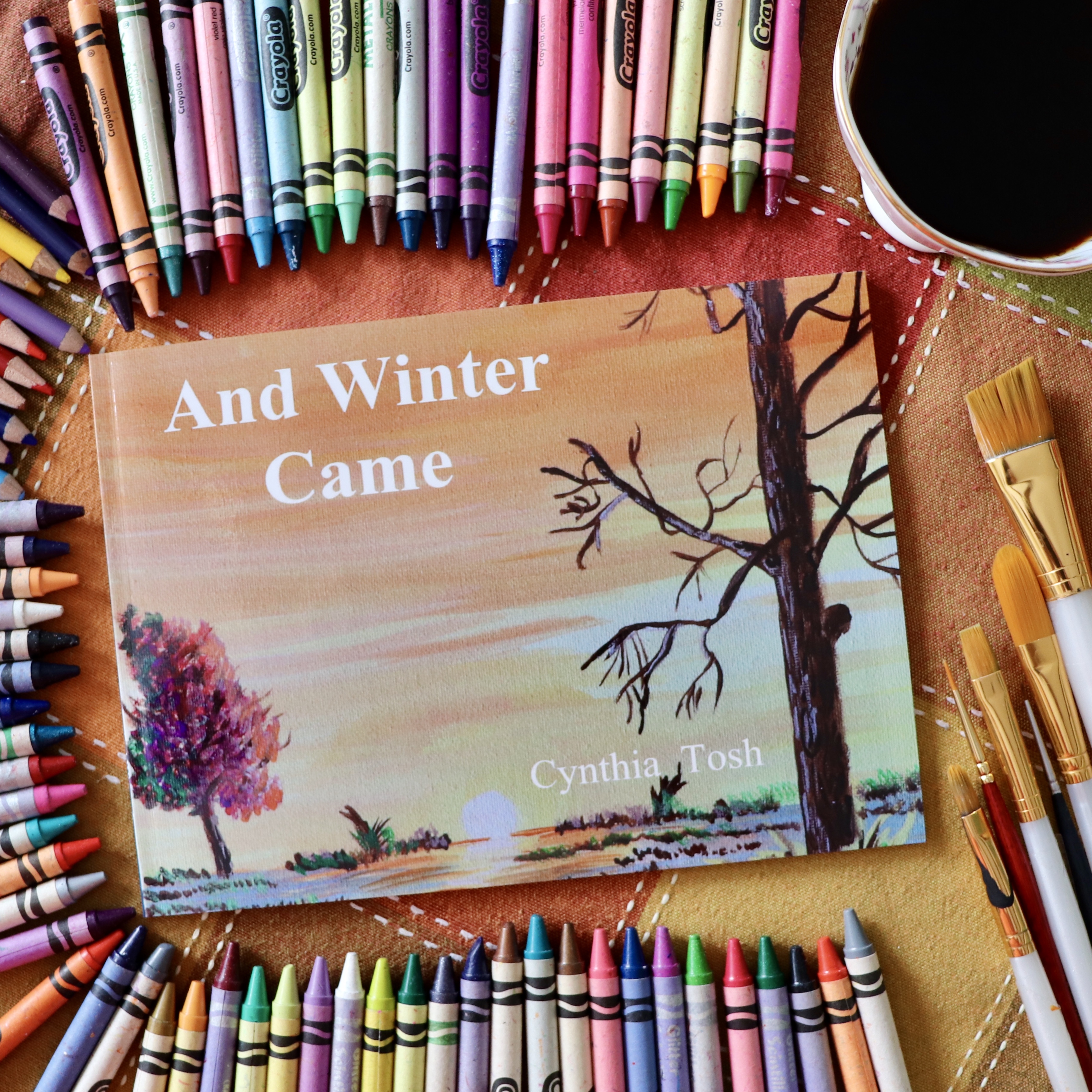
(Photo of BOOKPATCH Softcover)
Snapshot of And Winter Came
The door had never felt so empty as when Joel opened it and Van didn’t run out. His best friend couldn’t be gone. He felt denial settling in his mind like a bird roosting on eggs preparing to hatch into anger. Was there something he could have done differently to help Van to bargain for more time? Nothing felt the same without him and Joel felt depressed. The touch of his fur as an anchor to his thoughts. The comfort of his gaze to never feel alone. Van was always there for Joel. How could he mourn the friend who helped him overcome every loss in life?
A story about a robot running into a grieving child who lost their dog. The boy shares some cherished memories and how some don’t understand why he’s being sad and doing certain things. The robot expresses an empathetic understanding, but also admiration about how the child can experience seasons and live. He describes the beauty and honesty in the changing seasons and if nothing else feels understandable or can stay counted on the seasons changing can. He tells a story of what happened to him and how winter came and it snowed and all was right and true again. A story about seasons, the earth’s rotation, love, life, and the grief process. How the best things in life are free and the most profound meanings lie within nature.
ABOUT THE BOOK
And Winter Came is one book from a series published by The Emotional Advantage. Each book offers concepts to understand a bigger picture, emotions to realize how interactions and outcomes unfold, earth science terms to integrate the study of nature, and a self-generating thought processing exercise and activity at the end of the book to celebrate creativity, and raise self-esteem. This book is a platform to practice the MarieCyn Metacognition Method championing the ideology that if one emotion is seen from several contextual perspectives while integrated into educational concepts, it will shape to the learners own conceptualizations providing insight and aid in the decision-making process through enriching working memory and metacognition. This promotes achieving individualistic goals and increased self-esteem through compound concept integration interpretation. Pairing the perspectives with educational facts increases creativity, long-term retention rates, and ability to apply abstract thinking. Documentation and reflection of emotional application variance increases thought process engineering of self-generated ideas and concepts.
CONCEPTS
*The grief process is complex. Denial, Anger, Bargaining, Depression, and Acceptance can happen in different orders in varying durations.
*There is no right or wrong way to mourn a loss.
*Self-compassion is beneficial when trying to work through emotions.
*Grief can influence one’s decision-making process.
*Nature can parallel the human experience.
EMOTIONS and COGNITIVE PROCESSES
Denial, Anger, Bargaining, Depression, Mourn, Reconcile, Peaceful, Reminisce, Anxiously, Gratefully, Vulnerability, Joyful, Grief, Calm, Confusion, Love, Hope, Acceptance
EARTH SCIENCE TERMINOLOGY
Equinox, Moon, Star, Solar System, Proxima Centauri, Erosion, Mountain, Issac Newton’s Three Laws of Motion, Seasons

About the Author
Cynthia Tosh was born in Kansas. She loves inspiring children, preteens, and adolescents and believes they are the gatekeepers to the future. For over a decade, she has enjoyed the opportunity and privilege to interact with these age groups on many levels in multiple settings, including private/homeschool and public education, bereavement, and being a parent herself. She is an environmental conservation advocate and believes studying earth science increases self-awareness and life satisfaction. She holds a Master of Arts degree in Gerontology focusing on Human Development. Her Thesis Publication is based on studying Moderate Physical Activity and Mood Regulation in the Older Adult. She also holds a Master of Education degree in Counseling focusing on Mental Health and School Counseling. Her Practicum is based on studying Education and Bereavement. She is the author and co-illustrator of the multifaceted curriculum “The Emotional Advantage”, as well as an educational consultant. She started creating art at a very young age and continued enjoying the platform through adulthood. She is the organizer and instructor for multiple early childhood education groups. In her free time, she enjoys spending time with her family, nature hiking, playing board games, and building projects.
For more information about Cynthia Tosh and her books please visit:
Facebook
The Emotional Advantage
Instagram
Cynthia Tosh
The Emotional Advantage
. . .The Emotional Advantage (First Edition) Volume Three (All Ages). . .
Copyright © 2019 The Emotional Advantage by Cynthia Tosh. All rights reserved.
OUT OF PRINT
“There must be something strangely sacred in salt. It is in our tears and in the sea.”
-Kahlil Gibran-
The ocean covers 70 percent of the earth and 80 percent of it’s contents and species remain unknown. Humans experience emotions within cognitive and decision-making processes and many feelings relevant to context remain unrealized.
Innovative. Educational. Inspiring. A curriculum built on a platform of 21 months of quantitative and qualitative field research.
Here’s a preview of the book cover art for The Emotional Advantage (First Edition) Volume Three (All Ages). Integrating nature-based sciences in oceanography, plate tectonics, marine biology, and geography with creative exercises to increase social and emotional awareness. Thank you friends for your ongoing feedback, support, and interest. Grateful beyond words.
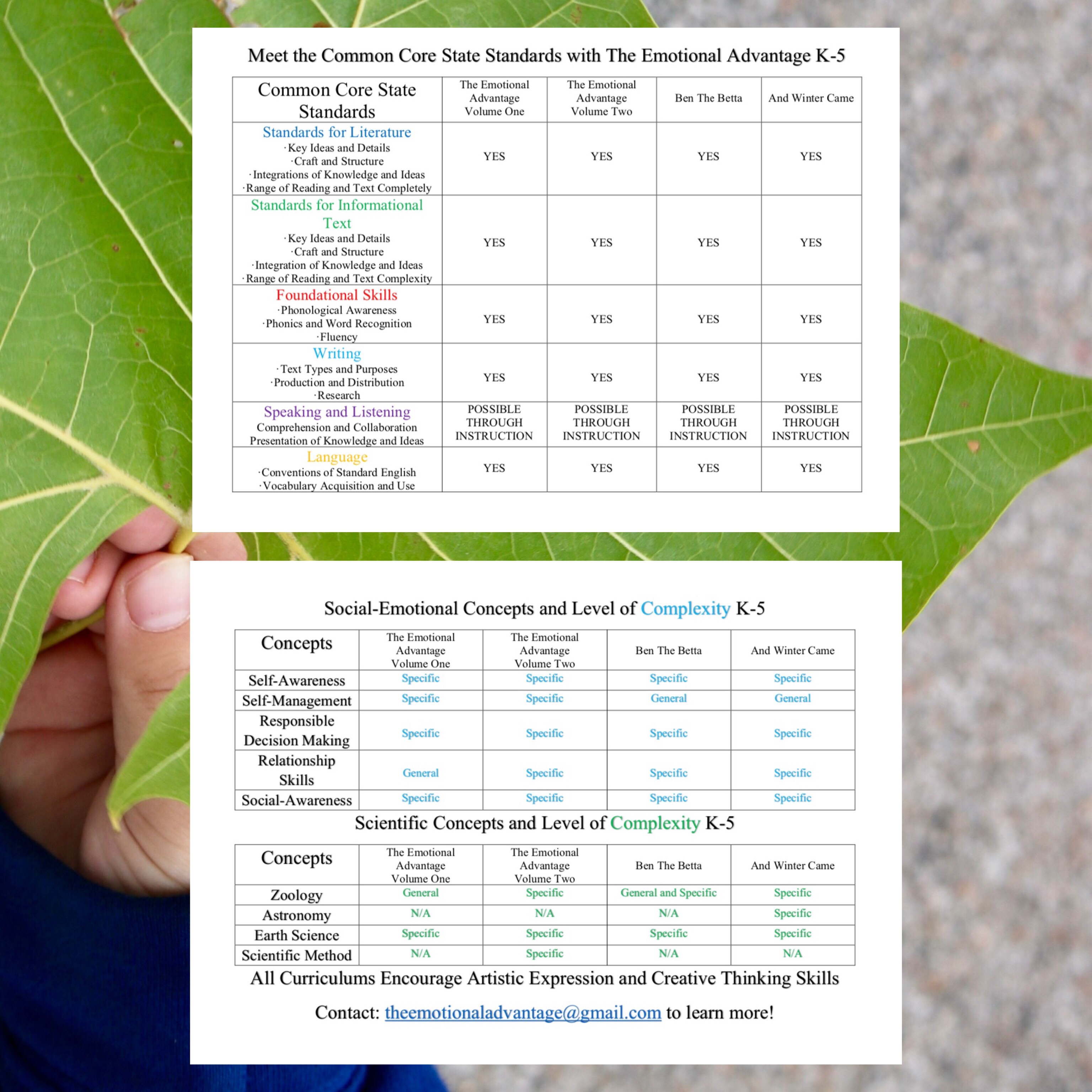 Questions and Answers
Questions and Answers
Here are some of the latest questions and answers about The Emotional Advantage. I’m grateful for your feedback and appreciate your time.
Q: Why integrate different learning platforms into The Emotional Advantage Curriculum?
A: To engage different learning styles.
Q: Why engage different learning styles?
A: Each learning style activates a different region of the brain. The more one uses their brain, the more one remembers what they learn.
Q: Who is The Emotional Advantage for?
A: The Emotional Advantage is for all ages. Currently, I share Quotes that inspire my creative process paired with my photography and share articles related to emotions. Curriculums are for K-5, but adolescents and adults enjoy them as well. The adult curriculum is a limited edition and no longer available.
Q: How do I know where to start?
A: Volume One and Volume Two are nine month curriculums. And Winter Came and Ben the Betta are stories integrated with science. The theme for Ben The Betta is “Authenticity and Land and Water Conservations”. The theme for And Winter Came is “The Grieving Process and Seasonal Changes”. Both books have a think about it analysis section and artistic expression exercise.
Q: Does my child need to know how to read to do the curriculums?
A: No. All the books are teachable without required reading on the students part. Independent reading is welcome. The entire curriculum builds on self-exploration, self-improvement, self-expression, and self-growth. There is no standard measurement for success. But, there are standards met in using the curriculums. These standards and concepts are inside a rubric on this page. Everyone is welcome to learn at their own pace and celebrate progress on their own level.
Q: Must every classroom student have a copy?
A: Every purchaser is welcome to share their copy of The Emotional Advantage with their immediate family. A licensing agreement required for classroom use.
Please email me at: theemotionaladvantage@gmail.com
Q: How many should I order for my class?
A: If you are ordering for a class, you’ll qualify for a group discount rate. Please email me at: theemotionaladvantage@gmail.com
Please provide how many students you’d like to order a copy for and include any digital receipts a student’s family has verifying a previous purchased copy.
Q: What format of the curriculum should I use? Should I use an electronic format or softcover format?
A: I recommend instructors to use the softcover format. But, both instructors and students can use which ever format they choose. The most important aspect is keeping a journal of artistic expression based on the week’s emotion as these become utilized for reflection exercises later in the Volume One and Volume Two curriculums.
Q: Volume One seems easier than Volume Two. Is this on purpose?
A: Yes, Volume One uses a basic and general approach to understanding context and emotions. This offers students an opportunity to fully grasp the material and build self-confidence before entering the zone of proximal level of development. Volume One builds on itself as does Volume Two.
Q: How does artistic expression help a student?
A: When we value children’s creativity, we help them feel valued as people, raising their self-esteem.
Q: What Social-Emotional concepts do the curriculums cover?
A: They cover self-awareness, self-management, responsible decision-making, relationship skills, and social awareness. The level of complexity listed inside the rubric on this page.
Q: How do I request a Free Fair Use Educational Resource List for Volume One?
A: Email me at: theemotionaladvantage@gmail.com
Q: How do the curriculums promote creativity?
A: The Emotional Advantage encourages each student to approach tasks from different perspectives. When one has practice thinking creatively, it becomes natural in all thought processing. Thinking “outside the box” is a valuable attribute in any career.
Q: How do the curriculums promote confidence?
A: The skills one develops in The Emotional Advantage not only offer a platform for how to interpret other’s emotions, but also instills confidence in the learner to name, interpret, and express their own.
Q: How do the curriculums promote problem-solving?
A: The Emotional Advantage presents many opportunities for the learner to solve problems by applying specific evaluation strategies provided inside the curriculum. This develops skills in reasoning and understanding.
Q: How do the curriculums promote perseverance?
A: Perseverance is essential to achieving success. The Emotional Advantage is a skill-building curriculum based on individual learning styles at an individual pace. The changing dynamic but yet, predictive nature of the curriculum enables learners to engage their zone of proximal development. When the instructor guides the learner along the path of how to analyze context, the learner develops the ability to self-evaluate and self-reflect. This produces a self-generated idea based on the learners personal background and experience. This promotes problem solving skills and creative thinking. Stress and anxiety stem from unresolved or mysterious emotions. These curriculums serve as a platform to practice identifying names for emotions, their potential function, and relation to context.
Q: How do the curriculums promote focus?
A: Identifying roles and contexts help an individual be successful in any situation. The Emotional Advantage sharpens these skills regularly. The curriculums present different species in different contexts. Some contexts are species specific. Such as the tiger is an endangered species and the emotional theme is sadness as he lost his home in the rain forest. This not only serves as a platform to learn how context and interpretation present emotional intelligence, but also raises awareness of a different perspective viewed through an endangered species eyes promoting empathy.
Q: What is the MarieCyn Metacognition method?
An individual’s ability to differentiate between what emotion they are feeling and how intensely the emotion is being felt is a vital aspect to developing emotional intelligence. Metacognition facilitates this process by thinking about thinking. This higher order thought processing promotes self-awareness and problem solving skills. There are two parts inside metacognition. First, there is the knowledge about cognition. Secondly, there is the regulation of cognition. When metacognition and the practice of an individual’s ability to differentiate between what emotion they are feeling and how intensely the emotion is being felt combine, this increases emotional intelligence and abstract thinking skills. My books use a Quantitative and Qualitative Field Research Based Theory called the MarieCyn Metacognition Method to carry out this goal. The bad emotion/good emotion stigma should end. All emotions are good. It is the way of which the emotion expresses in which a negative or positive annotation of reference may become applied.
Using colors to define emotions is not recommended as this is a practice originated from someone else’s perspective. The books outlay a step by step way to understand multiple emotions from multiple perspectives including one’s own. Gaining this ability enhances one’s capacity to develop a solution-focused problem-solving response to life. Cultivating emotional interpretation habits can improve one’s overall quality of life as situations become fully processed and not just experienced. Emotional intelligence gives one a “leg up” if you will on processing information. Thus, the meaning for the title of the curriculums The Emotional Advantage.



